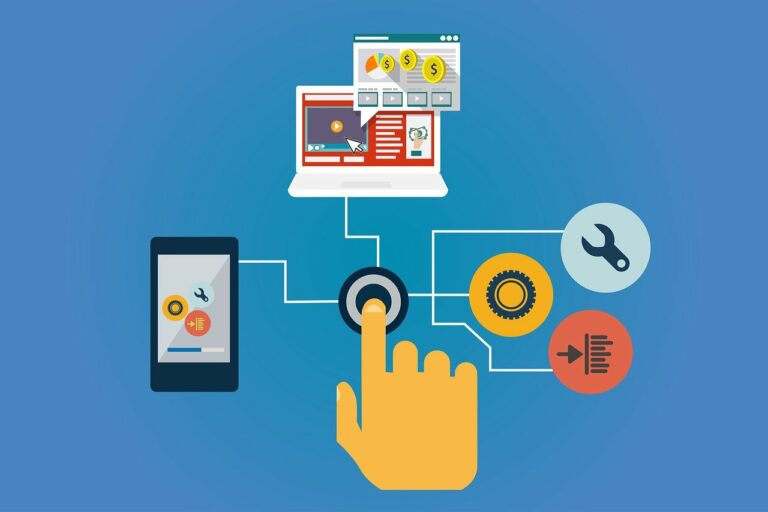Analyzing the Adoption of Self-Checkout Systems in Retail Stores
Retail technology has made significant strides over the years, transforming the way consumers shop and interact with brands. From the introduction of barcode scanners to the implementation of point-of-sale systems, the evolution of retail technology has streamlined processes and enhanced the overall shopping experience. With the rise of online shopping, retailers have also adapted by incorporating e-commerce platforms and mobile applications to cater to the changing preferences of modern consumers.
In addition to improving operational efficiency, retail technology has also revolutionized the way retailers collect and analyze data. The use of customer relationship management (CRM) systems and big data analytics has enabled retailers to gain valuable insights into consumer behavior and preferences. By leveraging this data, retailers can personalize marketing strategies, enhance customer retention, and drive sales growth in an increasingly competitive market landscape.
The introduction of barcode scanners revolutionized inventory management and checkout processes
Point-of-sale systems have made transactions quicker and more convenient for both customers and retailers
E-commerce platforms have allowed retailers to reach a wider audience and provide 24/7 shopping opportunities
Mobile applications have enhanced the overall shopping experience by offering personalized recommendations and seamless payment options
Retailers can now track customer interactions across multiple channels, allowing them to create targeted marketing campaigns based on individual preferences. This level of personalization not only improves customer satisfaction but also increases brand loyalty. By utilizing CRM systems and big data analytics, retailers can stay ahead of trends, anticipate consumer needs, and adapt their strategies accordingly to remain competitive in the ever-evolving retail landscape.
Overall, the evolution of retail technology has not only improved operational efficiency but has also transformed the way retailers engage with customers. As technology continues to advance, retailers must continue to innovate and embrace new technologies to meet the changing demands of consumers in an increasingly digital world.
The Rise of Self-Checkout Systems
Self-checkout systems have become increasingly prevalent in retail stores across the globe. Customers are now accustomed to the convenience and efficiency offered by these self-service options. With the rise of technology, retailers have recognized the value of implementing self-checkout systems as a way to streamline the checkout process and provide a more convenient shopping experience for their customers.
In addition to speeding up the checkout process, self-checkout systems also help retailers reduce labor costs. By automating part of the checkout process, retailers can allocate their staff to other areas of the store where they can provide better customer service or focus on tasks that require a human touch. This not only improves operational efficiency but also ensures that retailers can offer a more personalized shopping experience to their customers.
Benefits of Self-Checkout Systems for Retailers
Self-checkout systems offer retailers various advantages. Firstly, they can help reduce labor costs by allowing customers to complete transactions without the assistance of a cashier. This means that retailers can allocate their employees to other tasks, such as providing customer service or restocking shelves, ultimately improving operational efficiency.
Secondly, self-checkout systems can enhance the overall shopping experience for customers. With the option to quickly scan and pay for items themselves, shoppers can enjoy a faster and more convenient checkout process. This can lead to increased customer satisfaction and loyalty, as patrons appreciate the efficiency and flexibility provided by self-checkout systems.
How have self-checkout systems evolved over time?
Self-checkout systems have evolved from basic machines that could only scan and process items to more advanced systems that can accept various forms of payment and even weigh items for accurate pricing.
What are the benefits of self-checkout systems for retailers?
Some benefits of self-checkout systems for retailers include increased efficiency, reduced labor costs, improved customer satisfaction, and the ability to free up staff to focus on other tasks.
Are self-checkout systems easy for customers to use?
Yes, most self-checkout systems are designed to be user-friendly and intuitive, with clear instructions and prompts to guide customers through the checkout process.
Can self-checkout systems handle large or bulky items?
Some self-checkout systems are equipped with scales and scanners that can handle large or bulky items, but customers may need assistance from staff for particularly heavy or awkwardly shaped items.
Are self-checkout systems secure?
Self-checkout systems are designed with security features to prevent theft and fraud, such as weighing items to ensure they match the scanned item or requiring customers to verify their age for certain restricted products.







